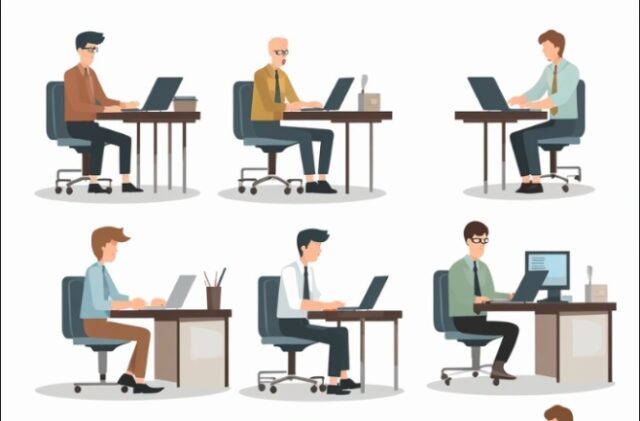In today’s fast -paced digital world, there has been a basic skill in almost all businesses. Whether you are a writer, programmer, computer registration specialist or office worker, your ability to typing assistance quickly and accurately write productivity and career outlook. Recent data suggests that daily writing on the average professional keyboard uses about 5-6 hours, this figure increases annually as digital communication continues to replace traditional methods.
The Growing Importance of Efficient Typing
Writing auxiliary technologies has developed significantly over the past decade, by changing the refined AI-operated systems from simple spelling cakes that can predict sentences, correct grammar and even adapt to individual types of patterns. These innovations explain how we interact with our equipment and dramatically improve efficiency in various digital functions.
What Is Typing Assistance Technology?
Typing assistance encompasses a broad range of tools, software, and techniques designed to improve fast and accurate typing, accuracy, and comfort. These solutions aim to reduce the cognitive and physical burden of typing while enhancing overall productivity. Modern typing assistance typically includes:
- Predictive text engines that suggest words or phrases as you type
- Autocorrection systems that fix common spelling and grammatical errors
- Text expansion tools that convert shortcuts into longer phrases
- Voice-to-text software that transcribes spoken words
- Ergonomic keyboards and accessories that minimize physical strain
- Typing tutors that help users improve their typing skills
- Specialized accessibility tools for users with different abilities
The integration of artificial intelligence and machine learning has revolutionized these technologies, making them increasingly personalized and effective at adapting to individual needs.
The Evolution of Typing Technology
The journey from typewriters to today’s smart typing systems reflects our constant quest for improved communication efficiency. Here’s how typing assistance has evolved:
Early Typing Tools (1980s-1990s)
The first typing assistants were simple spell-checkers in word processors like WordPerfect and early versions of Microsoft Word. These systems could identify misspelled words but offered limited correction abilities and frequently produced false positives.
Basic Autocorrect (2000s)
By the early 2000s, autocorrect features became standard in most word processing software. These systems could automatically fix common typos and spelling errors but were notorious for sometimes creating embarrassing substitutions.
Predictive Text (2010s)
The smartphone revolution popularized predictive text, which could suggest the next word based on the first few letters typed and common language patterns. This technology significantly improved typing speed on mobile devices with small screens.
AI-Powered Assistance (Present Day)
Modern typing assistance leverages artificial intelligence to understand context, learn from user behavior, and provide increasingly accurate suggestions. Tools like Grammarly, Gmail’s Smart Compose, and GitHub Copilot represent this new generation of intelligent assistants that can predict entire sentences or code snippets.
Benefits of Using Typing Assistance Tools
Increased Productivity
Research indicates that effective typing assistants can increase typing speed by 20-30% for average users. For professionals who type extensively, this translates to several saved hours weekly.
Reduced Error Rates
Quality typing assistance tools can reduce typing errors by up to 70%, according to a 2023 study published in the Journal of Human-Computer Interaction. Fewer errors mean less time spent on revisions and corrections, further enhancing productivity.
Prevention of Repetitive Strain Injuries
Typing-related repetitive strain injuries (RSIs) affect millions of workers annually. By reducing unnecessary keystrokes and suggesting completions, typing assistants can decrease physical strain. According to research from Ergonomics Today, users who leverage typing assistance tools report 40% fewer symptoms of RSIs.
Improved Writing Quality
Advanced typing assistants don’t just correct typos—they improve overall writing quality by suggesting better word choices, identifying passive voice, and highlighting clarity issues. This leads to more effective communication across all digital channels.
Enhanced Accessibility
For users with physical disabilities or learning differences like dyslexia, typing assistance technology can be transformative, making digital communication accessible and efficient when it might otherwise be challenging.
Top Typing Assistance Technologies in 2025
AI-Powered Writing Assistants
Tools like Grammarly, ProWritingAid, and TextExpander have evolved into comprehensive writing companions that offer context-aware suggestions, tone analysis, and personalized feedback based on your writing goals.
Specialized Programming Assistants
For developers, tools like GitHub Copilot, TabNine, and Kite provide intelligent code completion that understands programming context, predicts entire functions, and even explains code snippets—dramatically reducing development time.
Voice Typing Systems
Advanced speech recognition systems have achieved near-human accuracy levels. Dragon Professional, Google’s Enhanced Voice Typing, and Microsoft’s Azure Speech Service have transformed how professionals with limited typing abilities or physical limitations interact with their devices.
Keyboard Prediction Engines
SwiftKey, Fleksy, and Google’s Gboard have pioneered keyboard prediction algorithms that adapt to individual typing patterns and vocabularies, significantly improving typing speed on mobile devices.
Ergonomic Solutions
Physical typing assistance includes adaptive keyboards, ergonomic designs, and wrist supports. The Kinesis Advantage2, Logitech Ergo K860, and Microsoft Sculpt Ergonomic Keyboard combine comfort with productivity features.
How to Choose the Right Typing Assistance Tool
Selecting the optimal typing assistance solution depends on several factors:
- Identify your primary typing activities: Different tools excel at different tasks. Writers may benefit most from grammar-focused assistants, while programmers need code-specific solutions.
- Consider your device ecosystem: Some typing assistants work best within specific operating systems or applications. Ensure compatibility with your primary work environment.
- Evaluate learning curve vs. benefits: More powerful tools often require adjustment periods. Consider whether the long-term productivity gains justify initial productivity dips.
- Assess privacy implications: Many AI-powered typing assistants analyze your text on remote servers. If you work with sensitive information, look for solutions with strong privacy guarantees.
- Test before committing: Most premium typing assistance tools offer free trials. Experiment with several options before investing in a paid solution.
Implementing Typing Assistance in Professional Settings
Organizations implementing typing assistance technology across teams should consider these best practices:
Standardization with Flexibility
Standardize on core typing assistance tools while allowing team members to customize settings to their individual preferences and needs.
Training and Onboarding
Provide proper training when introducing new typing tools. Many users only utilize a fraction of available features without proper onboarding.
Regular Updates and Feedback
Typing technology evolves rapidly. Establish processes for evaluating and implementing updates, and collect user feedback to identify friction points.
Accessibility Considerations
Ensure that chosen solutions accommodate team members with different abilities and working styles.
Future Trends in Typing Assistance
The typing assistance landscape continues to evolve rapidly. Here are key trends to watch:
Multimodal Input Integration
Future systems will seamlessly blend typing, voice, and gesture inputs, allowing users to choose the most efficient input method for different contexts.
Context-Aware Collaboration
Typing assistants will become collaboration tools, understanding project goals and suggesting content based on team patterns and organizational knowledge bases.
Personalized Learning Systems
Next-generation typing assistants will identify individual typing weaknesses and provide targeted exercises to improve specific skills.
Brain-Computer Interfaces
Though still experimental, direct neural interfaces promise to eventually transform how we input text, potentially making traditional typing obsolete for some applications.
Embracing the Typing Revolution
Since digital communication dominates professional life, it is no longer optional to invest in writing aid techniques – it is necessary to maintain productivity and prevent physical stress. By choosing the right equipment and developing the right writing habits, professionals can significantly increase your digital communication efficiency by reducing the physical and cognitive weight of wider keyboard use.
The most successful professionals will be the ones who effectively exploit these techniques while maintaining their unique voice and decision. Writing help should increase human abilities instead of changing them, and serving them as a wise partner in our fast -paced world.
Whether you are a content creator, programmer, computer registration specialist or business professional, proper writing help tools can change your relationship to the keyboard and screen – can make digital tasks more efficient, accurate and comfortable than ever.










